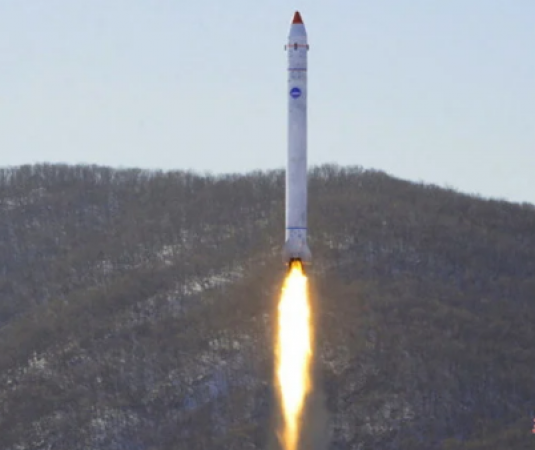
Seoul: North Korea on Monday claimed to have successfully launched a test satellite as part of a crucial final stage test to build its first spy satellite, a key military capability touted by Kim Jong Un along with other state-of-the-art weaponry.
Additionally, the North's official Korean Central News Agency released low-resolution, black-and-white images of Seoul and Incheon, a city west of Seoul, as an attempt to demonstrate the North's pressure to obtain a spying device. There was a clear effort. Keep an eye on its opponent.
According to KCNA, the rocket of the test satellite was launched on Sunday to evaluate the satellite's photo and data transmission system. The test results were hailed by the country's National Aerospace Development Administration as "a significant success as the launch of the reconnaissance satellite has gone through the final gateway process".
Also Read: Japan announces big military Military Overhaul
According to KCNA, it said it would complete the preparation of its first military reconnaissance satellite by April next year.
Soo Kim, a security analyst at the RAND Corporation in California, said that based on the images made public, the resolution did not appear to be particularly impressive for military reconnaissance.
However, I should point out that this is probably an ongoing development, so over time, North Korea's military reconnaissance capabilities may continue to increase.
Officials in South Korea, Japan and the United States reported on Sunday that they have detected two ballistic missile launches by North Korea from the country's Tongchang-ri region in the northwest, which is also the site of the North's satellite launch facility.
He claimed that the two missiles traveled a total distance of 550 kilometers (340 mi), or about 500 kilometers (310 mi), before landing in the waters between the Korean Peninsula and Japan.
Also Read: Japanese public opposes tax hike to pay for expanding military expansion
Noting that the North's state media claimed that both types of cameras were used in Sunday's test, Lee Choon Geun, an honorary research fellow at South Korea's Science and Technology Policy Institute, concluded that North Korea had used different types of cameras. Two missiles were fired with types of cameras – one for black-and-white imagery and video, and the other for colour.
According to Lee's analysis of a photo of the launch, the missiles were probably a new type of liquid-fueled weapon that could be used for both military and civilian purposes.
Speaking to reporters on Monday, Jeon Ha Gyu, a spokesman for the South Korean Defense Ministry, said North Korea fired two intermediate-range ballistic missiles, South Korean and US assessments unchanged.
He claimed that US and South Korean intelligence agencies were investigating additional details about the launch but made no further mention of them.
Kim laid out a list of advanced military equipment, including spy satellites, during a meeting of the ruling party early last year. The list also includes multiple-warhead missiles, solid-fueled long-range missiles, underwater-launched nuclear missiles, and nuclear-powered submarines.
In an apparent reference to US-led sanctions and US-South Korean military drills, which North Korea has complained about, Kim accused the United States of increasing its nuclear arsenal of such advanced weapons and its animosity toward the North. Have called for pressure to end the policies. Korea.
Since then, North Korea has started developing these weapon systems. North Korea has claimed to have tested a camera and data transmission system that will be used on a spy satellite in February and March.
It test-fired its Hwasong-17 intercontinental ballistic missile, which has the longest range and is believed to be capable of carrying multiple warheads, in November.
Also Read: S.Korea: Yoon's approval rating rises to 41.1 pc
A clear indication for a solid-fueled ICBM was made last week when North Korea claimed to have tested a "high-thrust solid-fuel motor" for use in a new strategic weapon.
Ankit Panda, an expert at the Carnegie Endowment for International Peace, predicted that North Korea would likely launch a reconnaissance satellite into orbit on or around April 15, the late Kim Il Sung's birthday and the country's founding date.